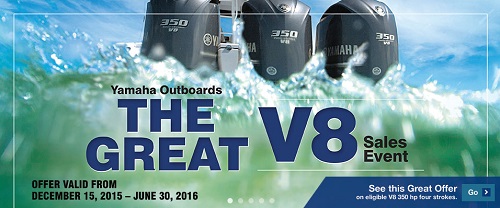 Want to catch more fish? Spend more time with your depth finder! A modern LCD depth finder is good for a lot more than just showing water depth. It is one of the most important pieces of fishing tackle on your boat no matter what kind of fishing you do, which is why they are also called “fish finders.” Unfortunately, many new to fishing don’t understand the critical role an LCD depth finder can play, especially given the fact that there are many species of fish classified as structure dependent.
Want to catch more fish? Spend more time with your depth finder! A modern LCD depth finder is good for a lot more than just showing water depth. It is one of the most important pieces of fishing tackle on your boat no matter what kind of fishing you do, which is why they are also called “fish finders.” Unfortunately, many new to fishing don’t understand the critical role an LCD depth finder can play, especially given the fact that there are many species of fish classified as structure dependent.A quality depth finder functions as another pair of eyes, allowing you to view what is going on underneath your boat. Turning it on with everything set to automatic might be fine for running, but it is capable of so much more when fishing. Here are some suggestions that will help you get the most from your unit so it can help you catch more fish.
Sonar works by transmitting audible signals from the transducer at specific frequencies into the water, and capturing the return signal after it bounces off the bottom or an object in between. The sonar beam is similar to a inverted ice cream cone, with the widest section at the bottom. The deeper the water, the wider the area surveyed. The return signal is channeled through a microprocessor and displayed on the monitor as a two-dimensional picture of a three-dimensional world. The images are affected by the power output and frequency of the transducer, the processing filters, the speed of the boat, the density of the reflecting object and other factors. By manually adjusting the unit’s output and receiving operation, you can maximize the amount of information displayed. With practical experience and keen observation, you can learn to interpret the data in ways that will surprise you.
 Start off by turning down your unit’s filters (on some units, the filters are called “Surface Clarity,” because they reduce surface clutter on the monitor). Set at high, they can filter out important information so reduce them to the lowest preset. Learn to read through some clutter, and you’ll see a lot more of what is really down there.
Start off by turning down your unit’s filters (on some units, the filters are called “Surface Clarity,” because they reduce surface clutter on the monitor). Set at high, they can filter out important information so reduce them to the lowest preset. Learn to read through some clutter, and you’ll see a lot more of what is really down there.
Turn off the auto sensitivity feature and set the signal strength manually using the “sensitivity” or “gain” control. By increasing the output, the unit will receive stronger return signals and depict bottom structure, bait schools and fish more distinctly, even if they are near the edges of the transducer cone where the signal is weakest. It will also make subtle bottom structure easier to identify. You will even be able to determine variations in bottom composition, which will appear as a change in the thickness, and even the color of the bottom representation on screen. Why is that important? Some bottom fish prefer hard bottom rocks, mussel beds or gravel, while others prefer sand or soft sediments. Not all wrecks stick up from the bottom very high, but you can still find them watching for these changes. Are you starting to get the picture?
It’s also important to use the zoom feature. Depth finders have zoom functions that let you expand a section of the water column to fill the screen. Instead of viewing from the surface to the bottom in 80 feet of water, you can zoom in on say 40-to-80 feet, which makes bottom structure and fish holding on it easier to identify. You can even split the screen to show the full water column and the zoomed in section side-by-side.
Understanding what you are seeing on the monitor requires interpretative skills that come with a little experience. If you don’t pay attention to what you are looking at on the screen, and then relate that information to what you see in the water or at the end of your line, you’ll never make the connection. First note that not all depth finders portray similar targets in the same way, so spend time with your unit. When it marks fish, study the signature. When you catch one, you’ll be able to relate what kind of fish made that specific mark because different species look differently on the screen. Imagine being able to discern between striped bass and bluefish as you pass over them. Or recognizing the difference between a tuna and a small pod of baitfish. If you’re trophy hunting for big fish, spending your time around a school of large forage fish certainly ups your chances.
As you can see, depth finders are a critical factor in successful fishing excursions. Be sure to purchase a quality unit, and spend the necessary time learning how to interpret what is on the screen. The better you are with a depth finder, the better saltwater fisherman you will become and you can take that to the bank.

